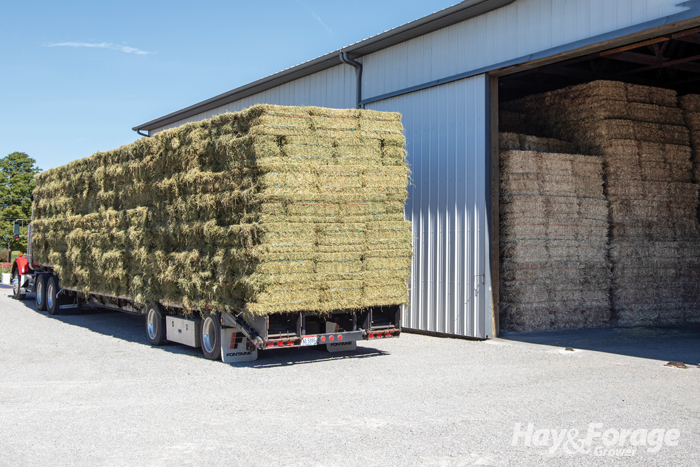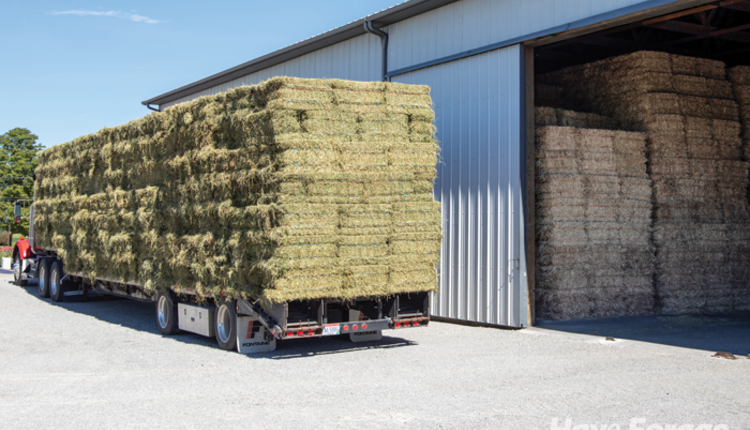
The world moves ever faster, but the pace of farming can’t always keep up. Regardless of advances in technology and machinery, at the end of the day we are still at the mercy of nature. Some years are prosperous for those who make their living in agriculture: ideal growing conditions, fair weather for harvest, and advantageous market prices. However, recent years have posed increasing challenges as farmers deal with concerns about water, changing weather patterns, and declining markets.
As a hay broker based in southern Colorado and, before that, having worked a summer on a flood-irrigated hay farm, I have seen the strain on farmers in my community as they try to produce premium hay on less and less water, deal with unseasonable weather, and feel the effects of low milk prices while input costs go up. Most of what I know about the hay and agriculture market is thanks to their willingness to share their knowledge and experiences. Ultimately, farmers are the final deciding factor in their products’ movement to market. No matter how effective a broker is at selling hay on the customer side, nothing moves until the farmer approves it, so the ability to listen and understand what the farmer needs from the relationship is essential.
In a difficult market year, supporting farmers and strengthening the relationship will take many different forms. Actively listening to farmers — not just about their hay, but about their lives — provides valuable input into how a broker can best be of service. Does the farmer need to move hay quickly and shorten payment terms to help ease financial constraints? Do they need a second opinion on whether barn-stored hay will be worth more if sold now versus later in the spring? If their local market has dried up, they may need help finding other outlets for their hay. Learning what each farmer’s priorities are will help guide a broker to find creative solutions rather than trying to force a one-size-fits-all approach. The following principles are always important but even more so in a year where prices or growing conditions constrict the market.
Be transparent
The foundation of any relationship is trust, and for a broker to be successful in moving hay, they must have trust from all parties — the growers they buy from, the customers they sell to, and the freight companies they use to transport the hay. If any of these three relationships falter, the broker will be cut out of deals. It’s no secret that brokers must make a margin in order to sustain operations, but the market knowledge and confidence in relationships to be able to share some information with farmers can go a long way in reassuring them that a broker is making a fair margin on their service and isn’t taking advantage of an already difficult situation. Brokers who work in a large sector of the hay market and move a higher volume of loads can afford to make a smaller margin, retaining more money in the deal for the farmer.
The more brokers and farmers know about each other, the better they are able to work together. If a broker shares what kind of freight rates they are getting to a certain region, a farmer might share a contact for a local trucker they know who is looking for work. If a farmer knows who their neighbor is selling hay to, that can help a broker dial into markets they may not have otherwise considered. While more information shared may pose some risk for a farmer, trucker, or customer to cut the broker out of a deal, the reality is that most recognize the advantages of working with a good broker and keep them involved because they want to, not because they couldn’t go around them if desired.
Set expectations
Two of the primary pain points farmers express in working with brokers is a lack of clear communication and not following through on finalized deals. Some brokerages speculate on the market by committing to large batches of hay without having a customer lined up for them. While this approach does work in some situations, it can sometimes leave those brokers unable to move the hay they committed to, which in turn leaves the farmer scrambling to find another home for their hay. In a constricted or volatile market, a more useful approach is for brokers to share their market knowledge and let farmers know what price different grades of hay are bringing and where hay is selling.
Working backwards to include a time frame to have the hay moved and paid for can also help inform farmers’ decisions on who to work with. For example, an offer of $180 per ton for 200 relative feed value (RFV) hay to a large dairy customer who can take 1,000 tons in two weeks on 15-day payment terms may be more attractive to a farmer than an offer of $200 per ton for the same hay moved to a smaller customer who wants to take 1,000 tons over the next six months and pays on delivery. Or it may not, depending on their priorities and storage situation, but being able to talk through details like that will make sure that proper expectations are set with both parties.
Having enough of a deal put together to be able to share a timeline for shipping and payment with a farmer ensures that the broker is held to a higher standard of honoring those parameters and avoids the farmer feeling like they have been strung out or taken advantage of.
Setting expectations and transparency go hand in hand as well — most deals don’t get executed exactly as planned every time, so keeping open lines of communication between farmer and broker will ensure things run smoothly when adjustments need to be made.
Be proactive
Last year in the San Luis Valley of southern Colorado, some farmers had all three cuttings of hay rained on, which was devastating for an area that prides itself on premium high-altitude dairy and horse hay. Stacks that were put up dry experienced stack damage more quickly than usual, and some farmers opened stacks to start loading trucks only to find that some bales had caramelized. They came into the season knowing that they had some problems and were sure to find more as the hay started moving, regardless of how careful or experienced they were. However, none of these factors caused a true disaster because the farmers were resilient and proactive in playing the hand nature dealt them.
A farmer who notices moisture issues within a stack while loading a truck and lets the broker know right away can often solve a problem before it even starts. As long as both parties know about it before the truck delivers to the customer, they can work together to find a solution that won’t jeopardize either relationship. The broker may have already set the expectation with the customer that there would likely be caramelization in some bales, or farmer and broker may have to adjust the price or sort off the top bales. Perhaps the truck may have to be rerouted to a less-picky customer.
In the same vein, if a broker notices a customer showing signs of wanting to back out of a deal or getting far behind on their payment, it’s their job to have backup plans lined up and ready to implement so the farmer doesn’t get burned or stuck with hay they thought was sold. A good broker must continue to monitor all hay in motion, not just put the deal together and walk away. Part of the service a broker provides is to see a deal all the way through and protect the farmer if there are market shifts or a deal falls through, and the only way that can be done is through close attention and proactive problem solving.
The more adverse conditions that exist in a given growing season, the higher the likelihood that farmers and brokers will encounter problems. When prices are down, margins are slim, and the trucking budget is tight. Farmers and brokers must be able to collaborate and move hay. This requires taking a proactive approach.
The role of a broker in the hay market is to make product move to market in a healthy way, which can look different year to year. The ones who succeed and maintain positive working relationships with farmers, even in difficult years, all share the qualities of being transparent in their communication, having enough information to be able to set and follow through with expectations, and the foresight to work through issues as they form. As in any job or lifestyle that relies on cycles of nature, hard times are unavoidable, but the people committed to working through them together will prevail.
This article appeared in the July 2025 issue of Hay & Forage Grower on page 24-25.
Not a subscriber? Click to get the print magazine.

